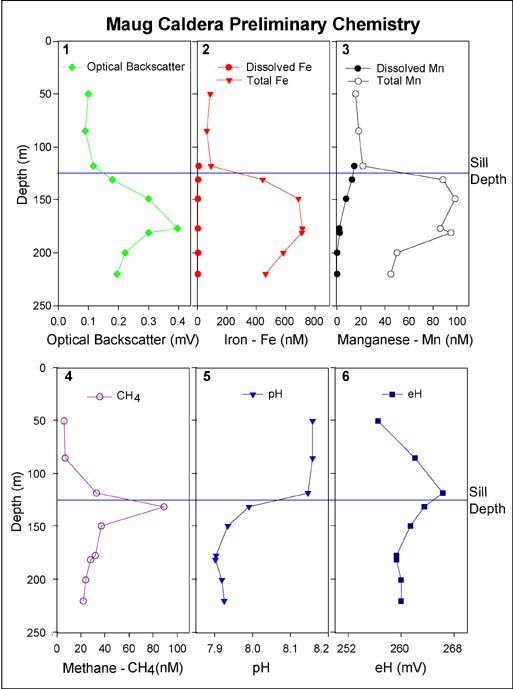These six graphs represent profiles of different chemical and physical tracers versus depth. Tracers are used to identify hydrothermal venting and to characterize the type of venting taking place. The sill is the depth below which fresh seawater cannot enter the caldera due to the walls of the caldera. 1) Optical backscatter is a measure of the particles in the water. 2) Most of the particles are composed of iron and the second panel shows the total amount of particulate iron in the water after the addition of acid to the sample. 3) Recent hydrothermal venting emits waters rich in dissolved manganese. Over time this manganese forms particles. The third panel shows manganese concentrations in the water and it shows that most of the manganese is in the particulate form (total manganese). 4) Methane is another common hydrothermal tracer. Methane is also a food source for microbes in hydrothermal envionments. 5) Changes in pH are brought about by the addition of acid or carbon dioxide. This panel shows that the pH of the seawater decreases below the sill depth. 6) eH is a measure of the change in the oxidation-reduction potential of the seawater. It is a sensitive indicator of fluids that have recently been in a reduced environment. Hydrothermal fluids are rich in chemical species that are reduced, for instance fresh dissolved iron (in the 2+ oxidation state), hydrogen sulfide, and methane.
NOTICE: This page is being retained for reference purposes only and is no longer being updated or maintained.


